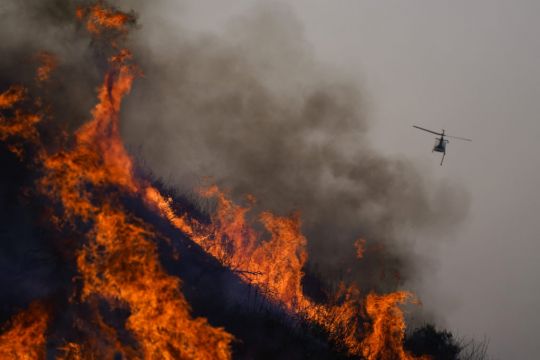Calmer weather has allowed firefighters to beat back twin blazes that drove nearly 100,000 Southern California residents from their homes amid fierce winds and extremely dry conditions.
Authorities lifted some evacuation orders on Tuesday as winds began subsiding and containment was increased for the massive wildfires in brushy hills above cities in Orange County on the west coast of the US.
More residents were expected to receive permission to return to their homes on Wednesday.
“With favourable weather, fire crews will find opportunities to establish more control lines,” the California Department of Forestry and Fire Protection said in a statement.

The Silverado Fire broke out in gusty weather around dawn on Monday near Irvine, a city of 280,000 around 35 miles south of Los Angeles.
That blaze and the Blue Ridge Fire just to the north, which broke out several hours later near the city of Yorba Linda, sent tens of thousands of residents fleeing densely populated neighbourhoods and at least 10 homes were damaged by flames.
Scientists have said climate change has made California much drier, meaning trees and other plants are more flammable.
October and November are traditionally the worst months for fires, but already this year 8,600 wildfires in the state have scorched a record 6,400 square miles and destroyed about 9,200 homes, businesses and other buildings, with 31 deaths.
Two firefighters who battled the Silverado Fire remained in hospital in critical condition after suffering second and third-degree burns over large portions of their bodies, Orange County Fire Authority chief Brian Fennessey said.

At one point, the winds were so fierce that gusts blew over tractor-trailers and grounded firefighting aircraft.
They subsided on Tuesday night and calmer winds were predicted for the rest of the week, the US National Weather Service said.
The Southern California Edison utility reported to state officials that it was investigating whether its equipment might have sparked the Silverado Fire.
According to Edison’s report to utility regulators, a “lashing wire” that ties a telecommunications line to a supporting cable may have come into contact with a separate 12,000-volt conductor line above it.







